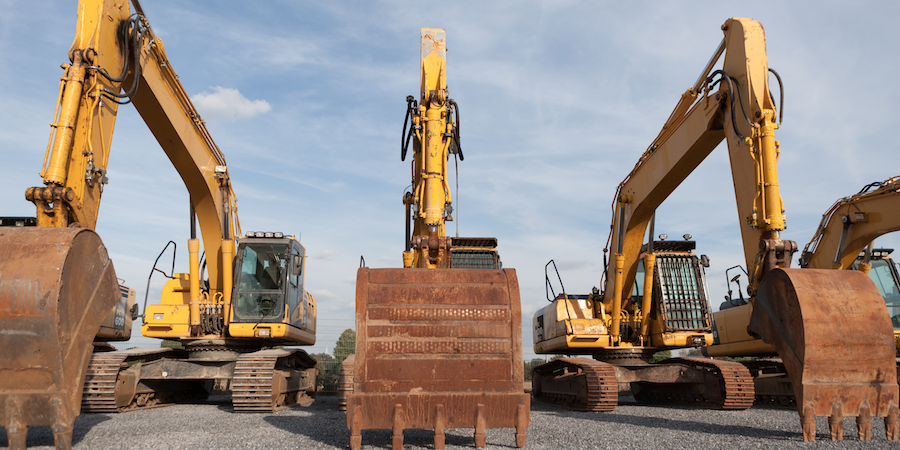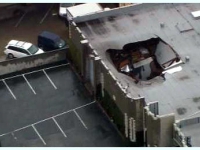One of our missions at Construction Citizen is to help match future craft professionals with jobs that will benefit their families over the long haul while helping to create a sustainable workforce for the industry. The beauty of it is that those things go hand in hand, but we cannot do it alone.
Reshaping the Construction Industry
The following article originally appeared in the July newsletter to clients of Kiley Advisors, LLC for the purpose of providing the latest leading indicators and industry issues to those clients. Reprinted with permission.Has the bottom been reached for oil and gas?Oil prices appear to have settled around $60/barrel and the rig count and well permits seem to have bottomed in April, showing positive signs in May, for the first time in months, that the decisiveness and deep cuts that quickly permeated the oil and gas industry earlier this year could be over.
July 08, 2015
One major piece of the transit hub at the World Trade Center site is the Oculus, designed by Santiago Calatrava. Read about what is being called the “most expensive train station in the world.”
July 07, 2015
Construction spending hits 6-1/2 year high in May; metro job gains shrink; ABI moves upEditor’s note: Construction Citizen is proud to partner with AGC America to bring you AGC Chief Economist Ken Simonson's Data DIGest. Check back each week to get Ken's expert analysis of what's happening in our industry.Construction spending in May totaled $1.036 trillion at a seasonally adjusted annual rate, the highest rate since October 2008, the Census Bureau reported today. The level was up 0.8% from the rate in April (which was revised up by a steep 2% or $20 billion) and up 8.2% from May 2014. Private nonresidential spending increased 1.5% for the month and 13% year-over-year, private residential spending rose 0.3% and 7.8%, respectively, and public construction spending gained 0.7% and 2.8%. However, the residential total masks a 13% year-over-year rise in new construction (21% for multifamily and 11% for single-family) and a drop of 3.4% in improvements. A 70% increase in manufacturing construction (led by a doubling of spending for chemical plants and tripling for transportation equipment plants) made this the largest private nonresidential segment. Next came power construction (conventional and renewable power plus oil and gas fields and pipelines), down 22% year-over-year, followed by commercial (new and renovated retail, warehouse and farm), up 11%; and office, up 27%. The two top public segments also had year-over-year gains: highway and street construction, 1.7%; and public educational spending, 3.4%. Census made annual revisions to 2013 and 2014 data. Total spending rose 6.6% in 2013 (instead of 5.6%) and 4.8% in 2014 (instead of 5.5%).
July 06, 2015
Wowsers! Have you seen something like this happen to a building around you?If your roof fails you, it will ail you in all sorts of awful ways. First and foremost, a roof cave-in could cause serious injury to people inside the building. Two, roof failure is a big and expensive mess! And that’s putting it mildly if your roof fails during a storm. A wet mess is the worst kind.What’s more, at the end of the day, the fiscal and possible legal impact of a total failure is likely massive compared to the normal cost of regular, proactive maintenance. So we at Chamberlin Roofing and Waterproofing think it makes sense to keep up with necessary repairs.
July 03, 2015
Editor’s note: The following was originally published in Cornerstone, the quarterly magazine of AGC Houston. Reprinted with permission.“If you want something done, ask a busy person.” I am not sure to whom or what Benjamin Franklin was referring when he made the statement, but he very easily could have been describing the AGC Houston chapter during the first months of 2015.While the drop in oil prices has created a cause for concern, Houston continues to enjoy a very strong construction market. Despite some markets seeing a bit of a slowdown, there continues to be plenty of work to bid and build on. With that being said, the support so many members give the chapter through their involvement is especially gratifying. It is difficult to single out individuals for their contributions because so many members impact directly our organization in numerous capacities. However, I would like to recognize a few for their good work over the past few months.
July 02, 2015
The Council on Tall Buildings and Urban Habitat (CTBUH) named the top four global award winners for new tall buildings as part of its annual awards program. The 123 submissions, up 40% from last year, were judged by an independent board of jurors, and they selected four to honor this year. The submissions are required to be new buildings and are judged for their sustainability, their contribution to the science and design of tall buildings and their livability.The jury selected one honoree from each of the four areas of the globe, The Americas, Auastralasia, Europe, and the Middle East and Africa.You can see the awardees and the finalists from each of the geographical areas on the CTBUH website here.
July 01, 2015
Federal agencies with oversight over various industries are taking the problem of worker misclassification more seriously and are taking steps to rein in as many bad actors as possible, according to various reports.Worker misclassification, as you may know, happens when a company pays employees as independent subcontractors with the intent of skirting payroll taxes and denying benefits like health coverage. There are many legitimate uses of contract labor, of course, but the problem arises when companies use the classification to gain an unlawful competitive advantage and to deny basic protections for craft professionals and others. Companies that cheat on their payroll taxes can easily underbid law-abiding contractors by as much as 30 percent or more because of their illegitimate savings on labor costs.
June 30, 2015
According to recent data from the Construction Labor Market Analyzer, the construction industry will need 1.5 million additional craft professionals by 2019. To highlight this shortage and create a sustainable pipeline of craft professionals, states are proclaiming October as Careers in Construction Month.Alabama, Indiana, Nebraska and Mississippi already have proclamations signed by their state governors declaring October as Careers in Construction Month (CICM). This nationwide campaign is designed to increase public awareness of the opportunities available in the construction industry. Schools, contractors and organizations are encouraged to partner locally and host construction career events throughout the month. In recent surveys conducted at local career fairs, 92 percent of the students attending these events stated the career fairs increased their interest in careers in construction.
June 29, 2015
MX3D, a design and engineering firm located in Amsterdam, is working on new and innovative ways to use robotic 3D printers to autonomously print with exotic materials. A unique feature of their process is that the robots are multi-axis and can build some projects without additional supporting structures. They build their own support as part of the construction process.MX3D has proposed to build a Joris Laarman-designed pedestrian bridge from molten steel and resins that will cross one of the many canals in Amsterdam as a way to showcase their abilities. DeZeen, a design, architecture and interiors website, says that the bridge will be printed by two multi-axis directional printing robots usually used in auto manufacturing to autonomously print the bridge by starting on opposite sides of the canal and building towards each other until the bridge is complete.
June 26, 2015



.jpeg?itok=6uFZXEBH)





.jpeg?itok=4Vi_1nJG)
































